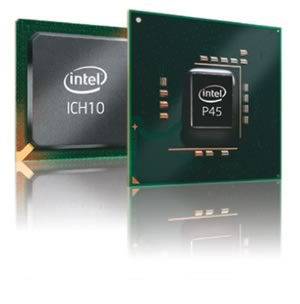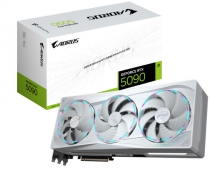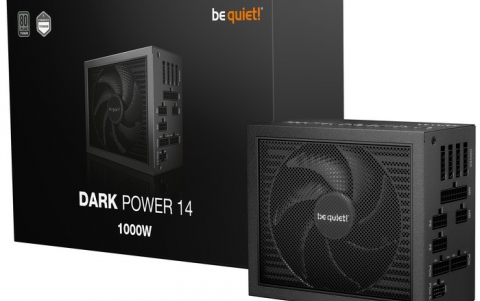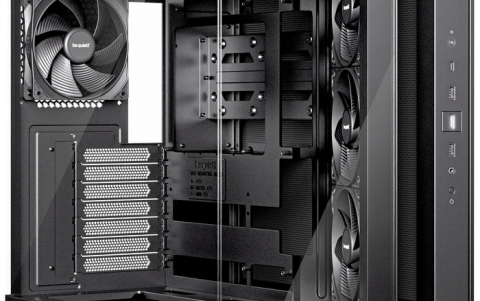Gigabyte GA-EP45-DS3R
1. About the Intel P45 Chipset
Review Pages
2. Gigabyte GA-EP45-DS3R
3. The Package
4. BIOS
5. Dynamic Energy Saver, Easy Tune 6
6. Benchmarks - Everest Ultimate Edition, SiSoftware Sandra
7. Benchmarks - PCMark Vantage, SYSmark 2007 Preview
8. Benchmarks - Maxon Cinebench, x264 HD Benchmark, TMPGEnc 4 Xpress
9. Benchmarks - SuperPI, wPrime
10. Benchmarks - 3DMark06, Crysis v1.2, Unreal Tournament
11. Overclocking
12. Conclusion
![]() Gigabyte has built a good reputation for its fully-featured motherboards. In fact is one of the first ever manufacturers presenting motherboards with energy saving features, a highly discussed issue that recently fired up a series of controversial announcements made by Gigabyte against Taiwanese Asus and vice versa.
Gigabyte has built a good reputation for its fully-featured motherboards. In fact is one of the first ever manufacturers presenting motherboards with energy saving features, a highly discussed issue that recently fired up a series of controversial announcements made by Gigabyte against Taiwanese Asus and vice versa.
Today we will examine the first ever motherboard that comes with Intel's new chipset series, the P45 Express. The chipset comes to replace the already successful P35 Express and will hopefully introduce further performance improvements.
- Intel P45 Express Chipset
 Intel officially launched the latest naming for x45-series chipsets at Computex 2008. The four products that users should expect come with the codenames G45 Express, G43 Express, P45 Express, and the P43 Express. Later this year we should also see the release of Intel's next generation X58 chipset along with the Nehalem chips.
Intel officially launched the latest naming for x45-series chipsets at Computex 2008. The four products that users should expect come with the codenames G45 Express, G43 Express, P45 Express, and the P43 Express. Later this year we should also see the release of Intel's next generation X58 chipset along with the Nehalem chips.
The G4x Express series include an Intel integrated graphics engine that codenamed X4500 / X4500HD. The small differences between the P45 and P43 Express chipsets that can be found over here
Our main focus today is of course the P45 Express chipset, which aims at the mid-range market. Intel has moved to 65nm manufacturing process for the P45 Express series, while the previous P35/X38/X48 chipset lineup has been manufactured at 90nm. The 65nm chips consume less power and heat, while they should offer higher overclocking margins.
Both P45 and P35 Express follow the same architecture. So what's the most noticeable feature of the P45 Express chipset?
First of all the support for the PCI Express 2.0 standard. There are two PCI Express 2.0 x16 slots that can support AMD/ATI Radeon cards in a CrossFire configuration. There is a catch however... These x16 slots will work at the speed of x8 speeds as soon as you install two GPUs. in the slots. On the other hand, Nvidia still offers 3 x16 slots with their latest 790i SLI chipsets for Intel.
Below we can see the block diagram of the P45/ICH10:

The system also includes the new ICH10/ICH10R (Raid option) Southbridge controllers. Again we cannot see any major improvements over the previous ICH9 series. What is probably very interesting is the support for Intel’s Extreme Tuning Utility. ETU is a software-level performance tweaking suite which allows end users to overclock their systems through Windows.

Comparing the P45 with the P43 Express chipsets, we can find just one major difference. The P43 Express supports only one PCI Express 2.0 slot, whereas, the P45 Express has two. If you don't care about multi-GPU configurations, this difference is probably meaningless. Last, the P43 Express chipset is expected to find its place in the OEM market due to its low cost.
Review Pages
2. Gigabyte GA-EP45-DS3R
3. The Package
4. BIOS
5. Dynamic Energy Saver, Easy Tune 6
6. Benchmarks - Everest Ultimate Edition, SiSoftware Sandra
7. Benchmarks - PCMark Vantage, SYSmark 2007 Preview
8. Benchmarks - Maxon Cinebench, x264 HD Benchmark, TMPGEnc 4 Xpress
9. Benchmarks - SuperPI, wPrime
10. Benchmarks - 3DMark06, Crysis v1.2, Unreal Tournament
11. Overclocking
12. Conclusion





















